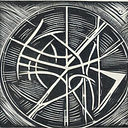Member-only story
Zeno’s Paradox of Planck Time
How can we define the passage of time at its shortest intervals?

Scientists have calculated that it takes 320 attoseconds for an electron to jump from one atom to another during a typical interaction. Roughly speaking, one attosecond is to one second as one second is to the time since the big bang. But that’s not the shortest interval ever recorded. The shortest interval of time ever experimentally measured is the time it takes light to cross a hydrogen atom, an estimated 247 zeptoseconds. This is a thousand times briefer than an attosecond, and it’s still not even close to a planck second, the time scale at which any theoretical measurement breaks down completely.
The reason for this breakdown is complicated and has to do with the other Planck units that the Planck second is based upon. A Planck second is the time it would take light to travel a Planck length. A Planck length is the distance light would travel in a Planck second. That definition might seem circular, but it doesn’t really matter. The Planck length does not have any precise physical significance. It is a common misconception that it is the inherent “pixel size” or smallest possible length of the universe, when really it is a standardization of physical units based on certain observable quantities, like the gravitational constant and the speed of light. What…
